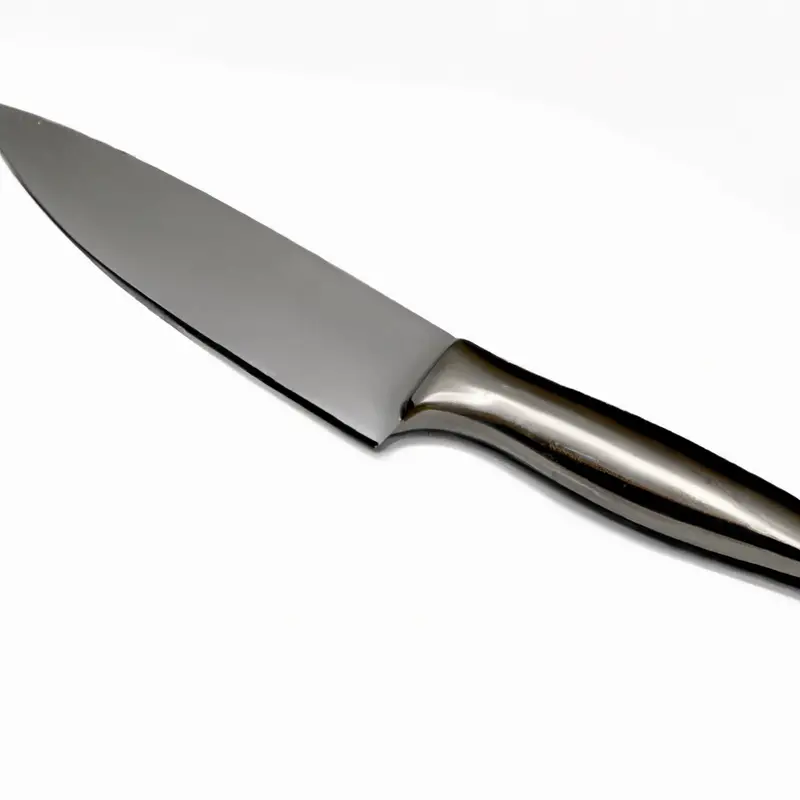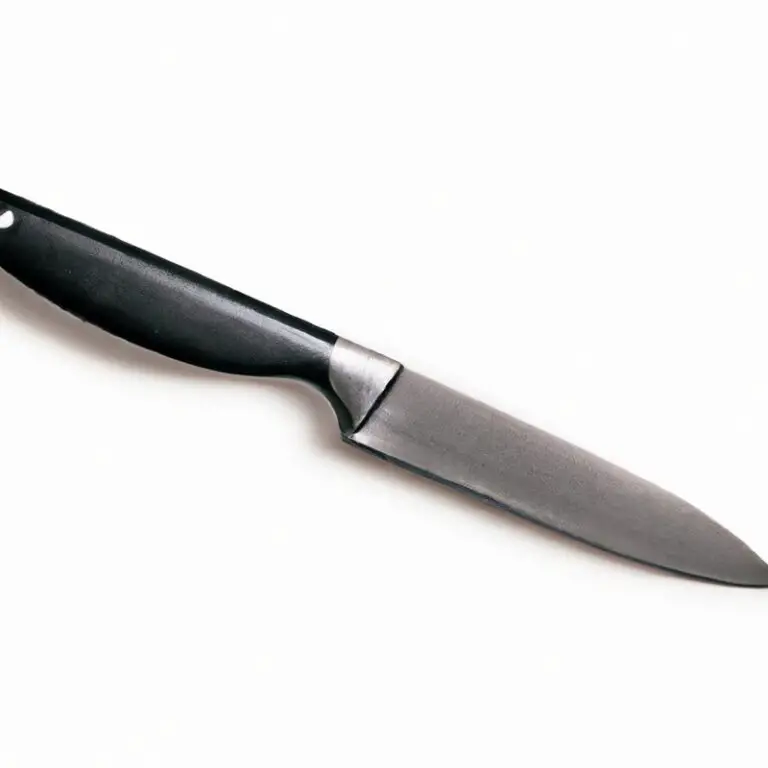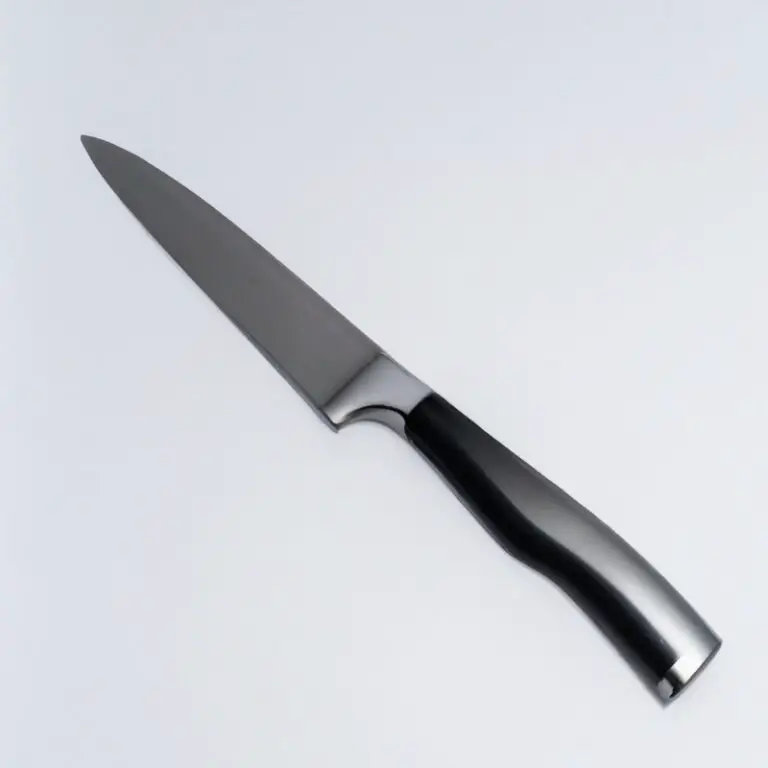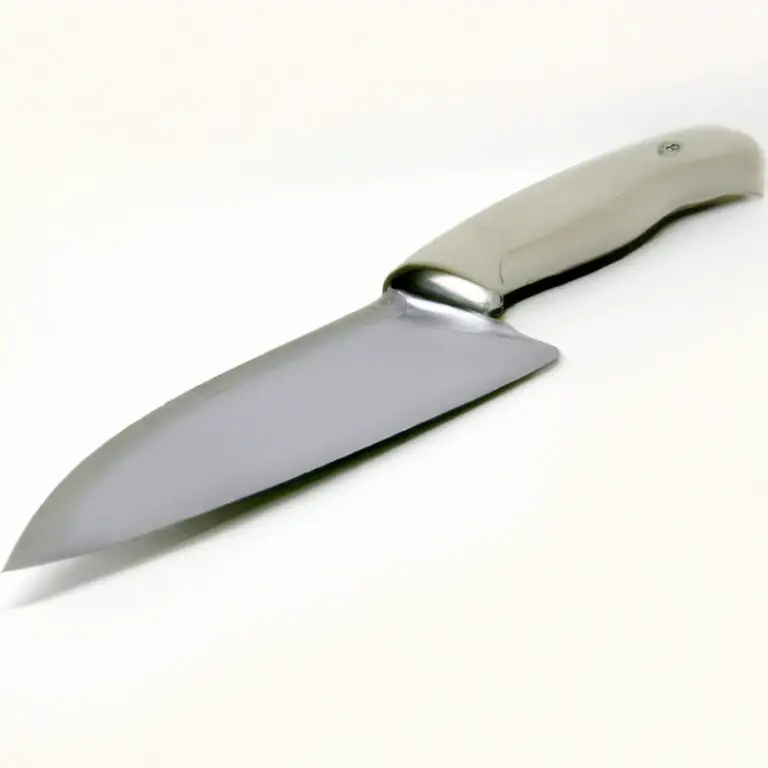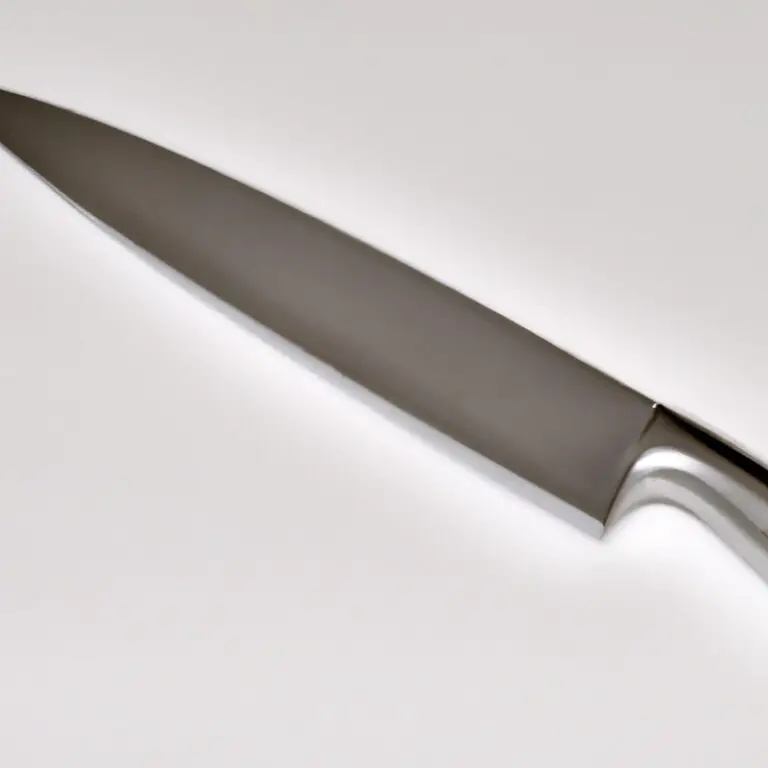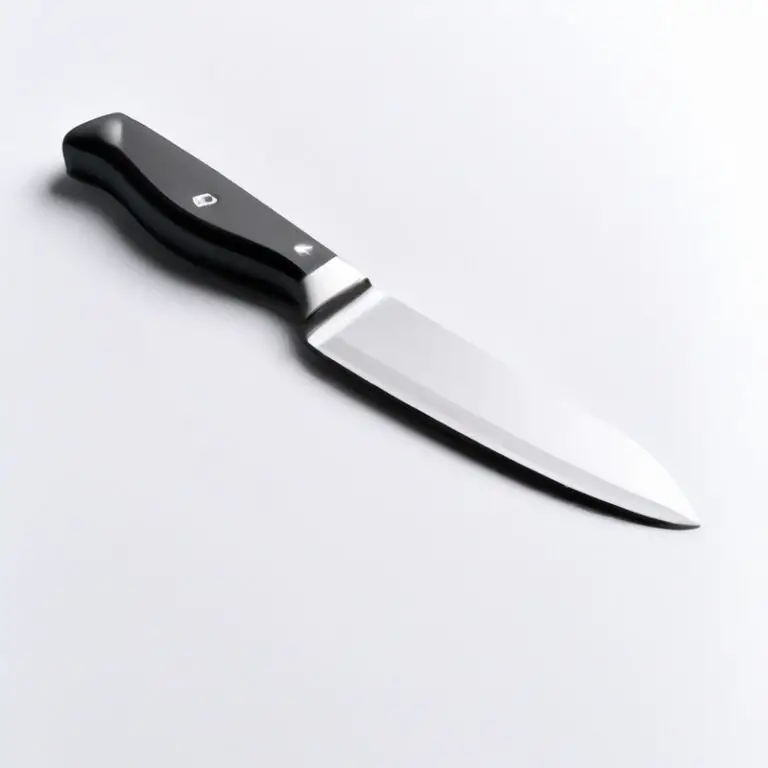What Are Some Common Uses For a Paring Knife In The Kitchen? Slice Like a Pro!
Key Takeaways:
- A paring knife is an essential tool in the kitchen, perfect for smaller tasks like peeling, coring, and trimming produce and meats.
- This versatile knife can also be used to create decorative cuts and designs in fruits and vegetables, making them a stylish addition to any dish.
- Choose a high-quality paring knife with a sharp blade and comfortable handle, and be sure to maintain it properly with regular sharpening and honing.
- Whether you’re a professional chef or a home cook, a paring knife is a must-have tool in your kitchen arsenal, providing precision and control for a range of tasks.
If you’re looking for a versatile and multi-purpose knife in your kitchen, then the paring knife should be on the top of your list. Don’t let its small size fool you because it comes in handy for various tasks, from peeling fruits and vegetables to slicing delicate ingredients.
As an experienced cook, I’ve found myself reaching for the paring knife more times than I can count.
In this article, we’ll explore the various uses of a paring knife, from creating garnishes to preparing citrus fruits for juicing. Get ready to sharpen your skills as we dive into the world of paring knives.
| Use | Description |
|---|---|
| Peeling | A paring knife can easily remove the skin from fruits and vegetables, such as apples, potatoes, and carrots. Its sharp, pointed tip can also be used to remove blemishes and eyes from produce. |
| Trimming | When preparing meat or seafood, a paring knife is helpful for cutting away excess fat and removing bones. It can also be used to trim the ends of smaller cuts of meat, such as pork chops or chicken breasts. |
| Garnishing | A paring knife can be used to create intricate designs and decorations on fruits and vegetables, such as carving a rose out of a tomato or creating a fan of cucumber slices. This is often done for presentation purposes in fine dining restaurants. |
| Making precise cuts | The small size and sharpness of a paring knife make it ideal for precision cuts, such as scoring the skin of fish or making small incisions in bread dough before baking. |
Peeling fruits and vegetables
Peeling fruits and vegetables is one of the most common uses for a paring knife in the kitchen. This small and sharp knife is ideal for removing the skins of fruits and vegetables quickly and efficiently, without wasting too much of the edible flesh.
When peeling, make sure to hold the fruit or vegetable firmly with one hand and guide the paring knife along the contours of its surface with the other hand.
You can also use the tip of the paring knife to remove any blemishes or imperfections on the skin. Remember to always be careful when handling the sharp blade, and to choose ripe and firm produce for easier peeling.
By using a paring knife to peel fruits and vegetables, you can also try new recipes that require peeled produce, such as apple pies, mashed potatoes, or stir-fried vegetables.
Removing seeds and cores
Using a paring knife to remove seeds and cores is a common kitchen task. Seeds and cores can be found in a variety of fruits and vegetables such as apples, pears, strawberries, and peppers.
Removing them before cooking or consuming ensures a smoother texture and better taste.
To use a paring knife for this task, start by cutting the fruit or vegetable in half. Use the tip of the knife to carefully remove the core or seeds.
Ensure you remove all the seeds, especially in peppers as they can be bitter and spoil the smooth taste of the dish.
If you want to remove the seeds or cores in a more efficient way, you can use a small spoon or a specialized tool designed for this specific task. Whichever tool you use, make sure to handle it with care to avoid injuring yourself.
By using a paring knife to remove seeds and cores, you can improve the taste and texture of your fruits and vegetables.
It is an easy and efficient way to prepare your food for cooking or consuming.
Creating garnishes and decorations
Creating garnishes and decorations is a fun and creative aspect of cooking that can elevate the presentation of dishes. A paring knife is an essential tool for this task as it allows for precise and intricate cuts.
Using a paring knife, one can create various garnishes such as twists, flowers, and curls that can be used to decorate appetizers, desserts, and cocktails.
It is also useful for cutting fruit into interesting shapes and designs. A paring knife can also help in removing the skin and seeds of fruits such as tomatoes and peppers, as well as creating small incisions for stuffings.
Overall, a paring knife is an indispensable tool for creating visually appealing garnishes and decorations in the kitchen.
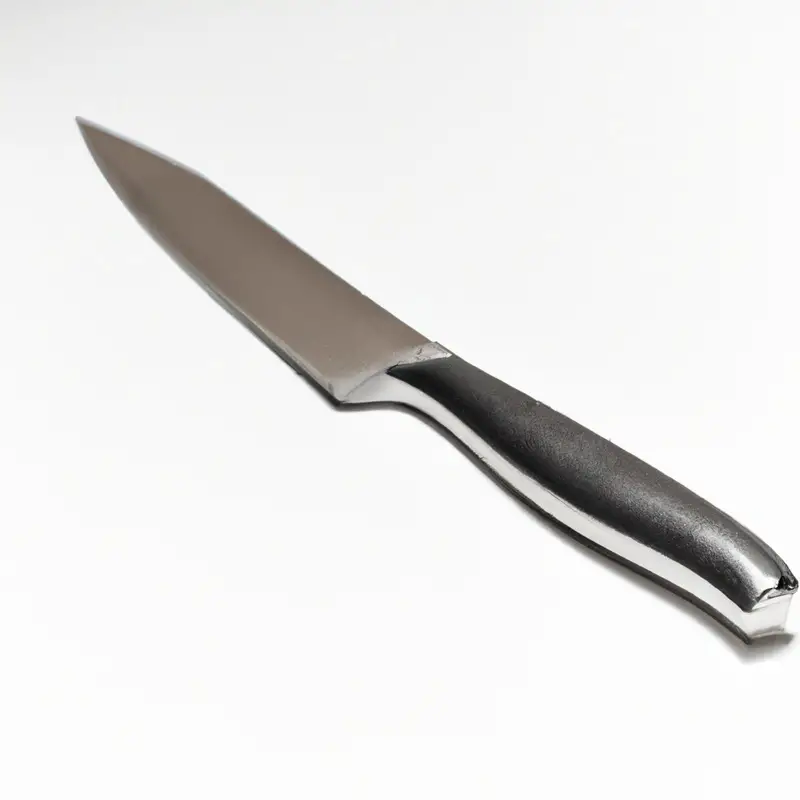
Trimming fat and skin
Trimming fat and skin is another common use for a paring knife in the kitchen. This type of knife is perfect for removing excess fat from meats or trimming the skin from poultry or fish.
A sharp paring knife can get into tight spaces and make precise cuts, allowing you to trim away just the right amount of fat or skin.
It is important to have a sharp paring knife to avoid tearing or damaging the meat. A paring knife can also be used to remove the silver skin from beef tenderloin or to trim the fat from pork chops.
Overall, a good paring knife is an essential tool for any home cook who wants to trim their meat and poultry perfectly.
Slicing small fruits and vegetables
Slicing small fruits and vegetables is one of the most common uses for a paring knife in the kitchen. Its small, narrow blade allows for precision cutting and easy maneuvering around the curves and corners of small produce.
Whether you need to slice a cherry tomato for a salad or dice a shallot for a recipe, a paring knife is the perfect tool for the job.
It also comes in handy when preparing fruits like strawberries, kiwis, and apricots, where a larger knife may not be practical. Just be sure to keep your fingers out of harm’s way and use a cutting board for stability.
Preparing small ingredients for recipes
Preparing small ingredients, like garlic cloves, shallots, and herbs for recipes can be challenging if you don’t have the right knife. A paring knife can make this task easier and efficient.
The blade’s pointed tip allows it to easily pierce through the skin, while the sharp edge effortlessly cuts through the ingredient.
Whether you’re mincing garlic for a sauce or peeling pearl onions for a stew, a paring knife is an excellent tool for preparing small ingredients. Its small size gives you better control and precision when working with small items.
The paring knife is especially useful for preparing fruits like strawberries, kiwis, and limes.
It allows you to remove the skin and slice off the stem or top with ease, giving you perfectly prepared ingredients for recipes like fruit salads or garnishes. When using a paring knife, be sure to use a cutting board to protect your fingers and the surface you’re working on.
Keep the knife sharp to ensure smooth and precise cuts.
With these tips in mind, you’ll find that preparing small ingredients for recipes is a breeze with a paring knife.
Cutting delicate or intricate shapes and designs
A paring knife is also incredibly useful when it comes to cutting delicate or intricate shapes and designs. Whether you’re looking to create delicate garnishes or perfectly sliced rounds of fruits and vegetables, a paring knife can help you get the job done with precision.
Its small size also makes it easy to control, which helps reduce the risk of accidents and injuries.
When using a paring knife for cutting intricate shapes, it’s important to keep the blade sharp and to use a slow and steady motion, making small cuts instead of trying to force through the food in one go. This will help you make clean cuts without damaging the food, which is especially important when creating intricate designs.
Whether you’re a professional chef or just a home cook looking to elevate your cooking skills, a paring knife is a must-have tool in your kitchen arsenal.
Removing stems and tops from produce
One of the frequently used functions of a paring knife in the kitchen is to remove the stems and tops from produce. This task is vital as it grants easy access to the edible areas of the fruit or vegetable.
A paring knife is ideal for this task since it features a small, pointed blade that provides the precision required for this task.
When removing stems and tops from produce, it is critical to exercise caution to avoid cutting through the edible parts of the plant. Incidentally, some produce such as strawberries and tomatoes require specific techniques.
For instance, when removing the stem on a strawberry, aim to remove the green leaves entirely, leaving the maximum amount of fruit intact.
Overall, removing stems and tops from produce using a paring knife is a common kitchen practice. It helps ensure that the edible part of the fruit or vegetable is accessible while simultaneously providing the accuracy needed to avoid cutting through the edible parts of the plant inadvertently.
Slicing cheese and making small cheese cubes
Slicing cheese and making small cheese cubes are two significant tasks that can be easily accomplished with a paring knife. To slice cheese, start by placing it on a cutting board and use a paring knife to make clean cuts by starting at the edge of the cheese and slicing downwards.
To make small cheese cubes, cut the cheese into slices before cutting it into small cubes or chunks.
A paring knife’s sharp blade is suitable for this task, as it allows for precise and controlled cuts. Be sure to use a cutting board and keep your fingers away from the blade to prevent injury.
Preparing citrus fruits for juicing
To prepare citrus fruits for juicing, start by washing the fruit thoroughly under running water and then drying it with a clean kitchen towel. Use a sharp paring knife to slice off both ends of the fruit to create a flat surface.
Next, cut each fruit in half with the paring knife, making sure to cut through the center of the fruit.
You can then use a citrus juicer to squeeze out the juice from the fruit. Alternatively, you can use the paring knife to loosen the flesh of the fruit by running the blade between the flesh and the skin.
This will make it easier to extract the juice.
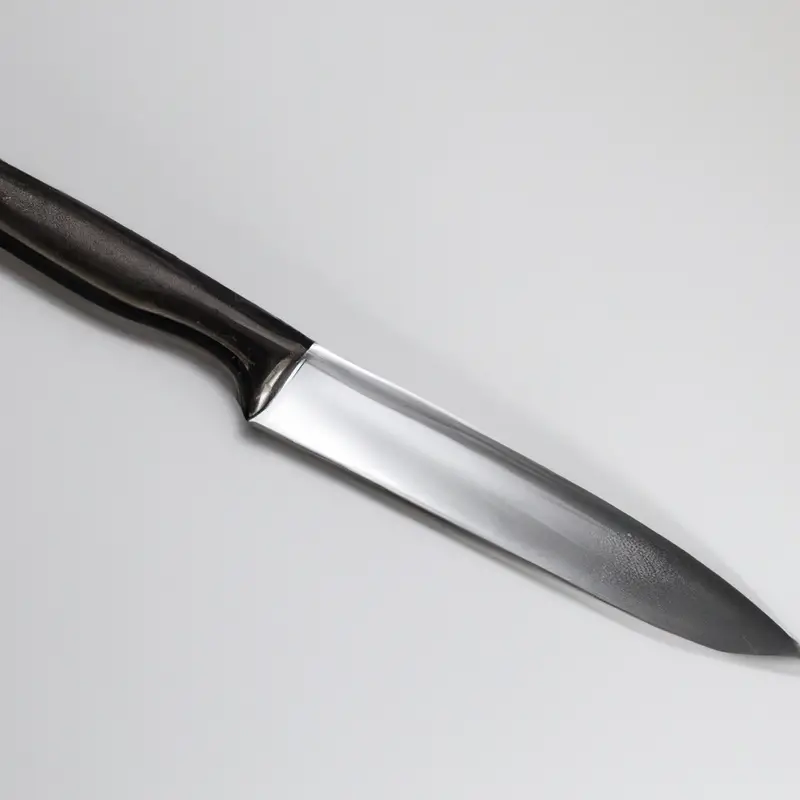
Final Verdict
A paring knife is an essential tool to have in any kitchen. It can perform a variety of tasks, such as peeling and trimming fruits and vegetables, slicing cheese, and even creating intricate garnishes.
By using a paring knife, you can achieve precision and accuracy in your food preparation, resulting in aesthetically pleasing and delicious dishes.
Throughout this article, we have highlighted the versatility and usefulness of this knife, and we hope that you have gained valuable insights into its common uses. Remember, practicing good knife skills takes time and patience, but with the right tools and techniques, you can elevate your culinary creations to the next level.
Trust in the reliability and practicality of our tips, and start incorporating a paring knife into your kitchen repertoire today.

